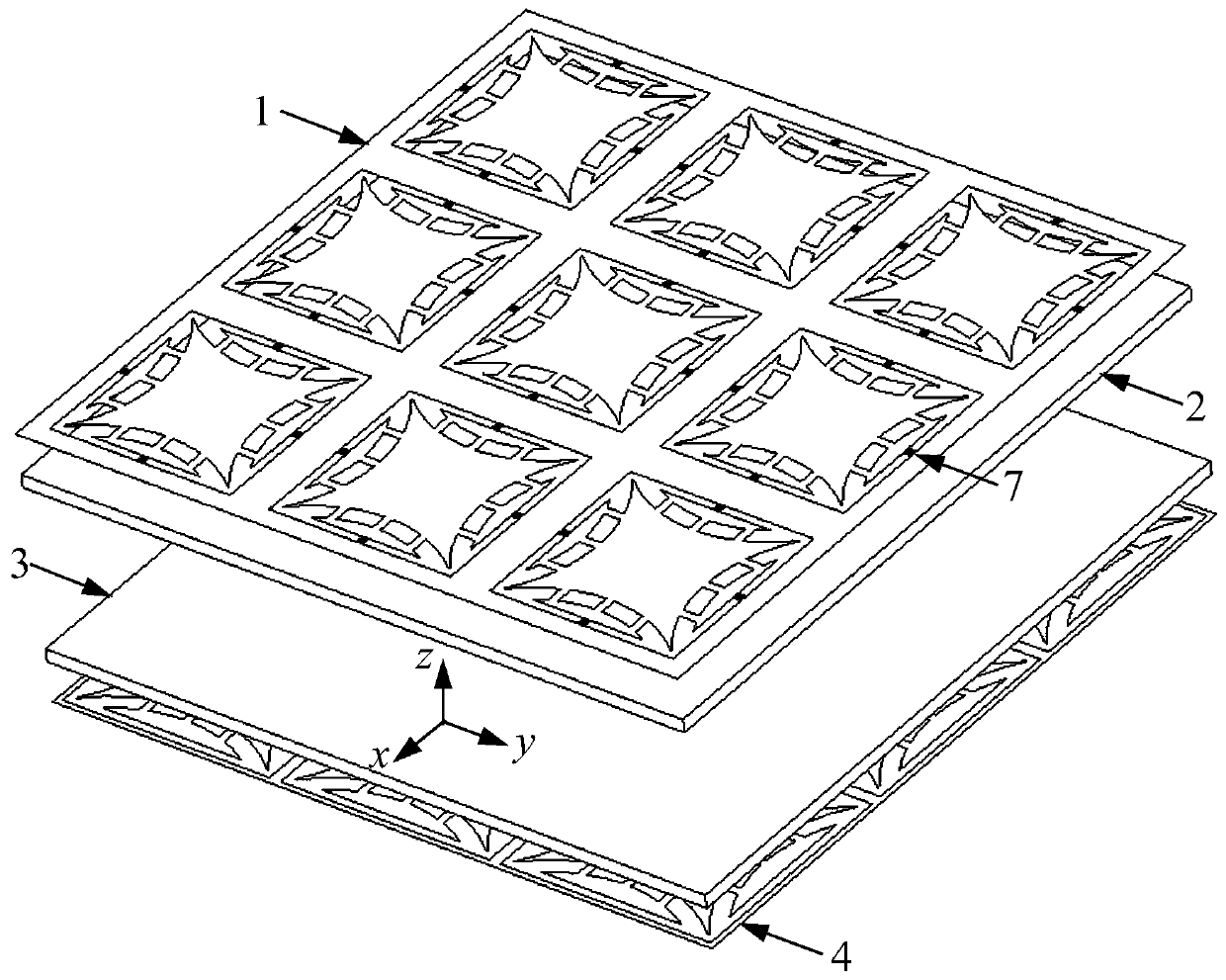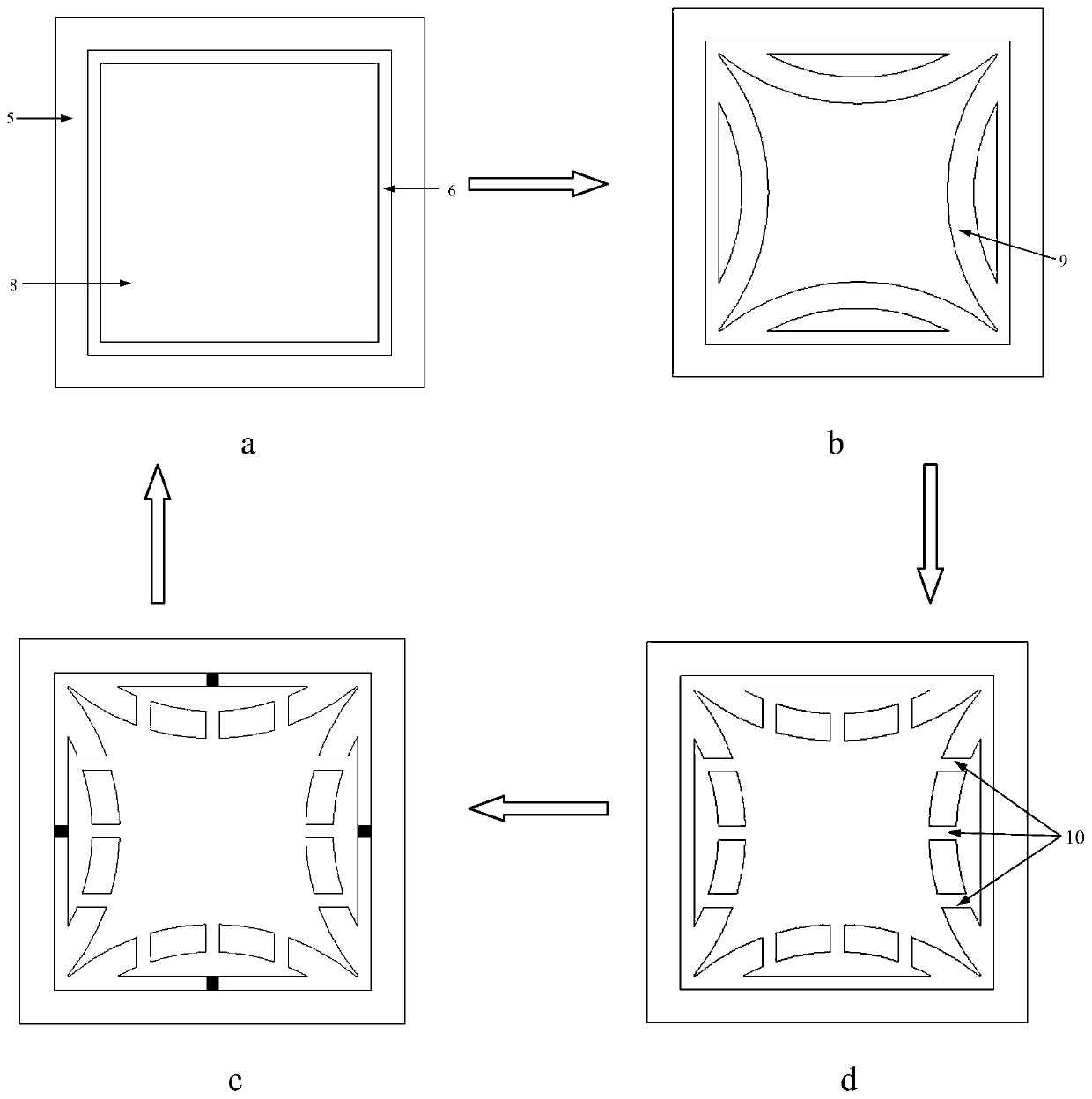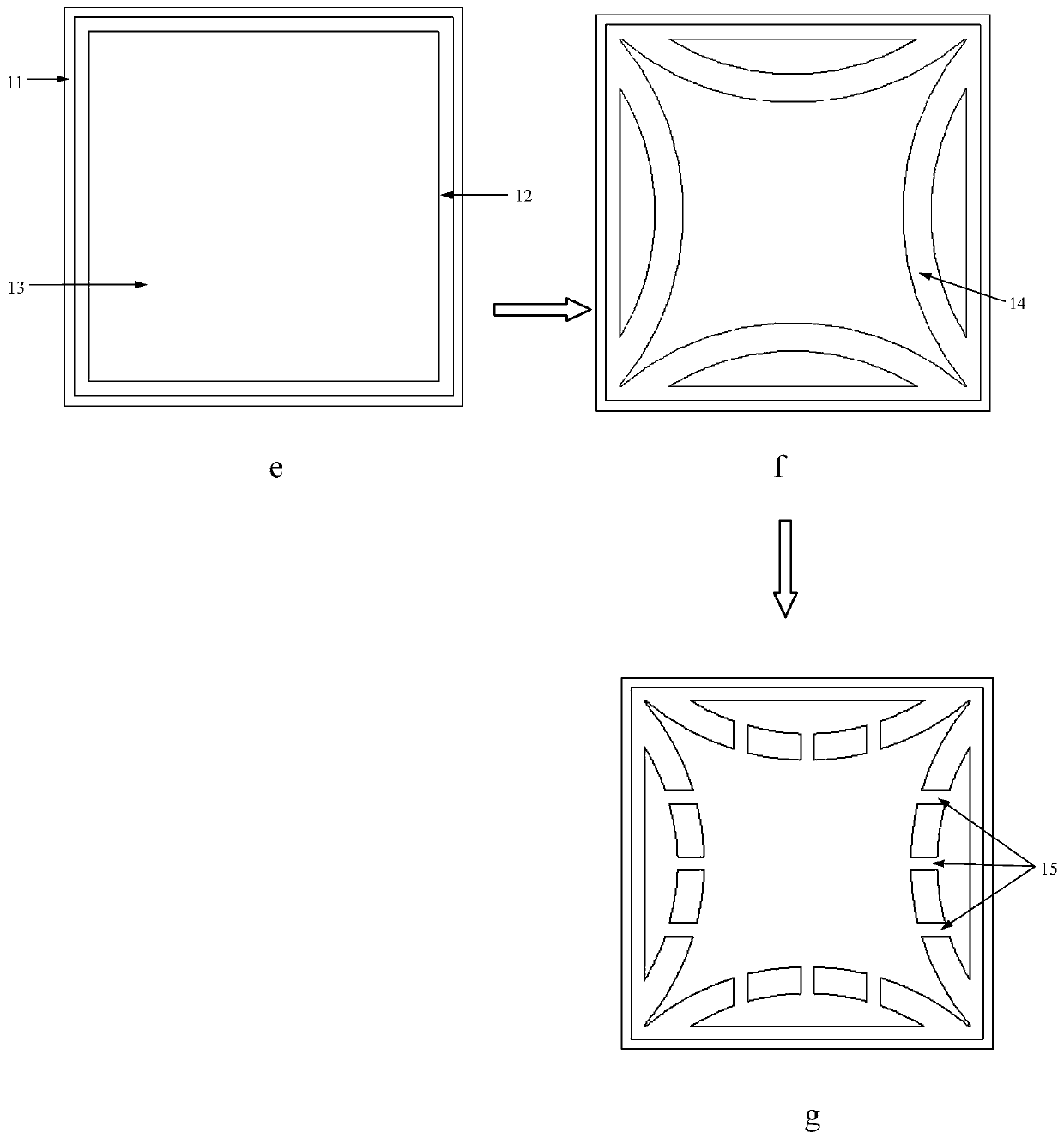Ultra-wide band strong electromagnetic field protection device
An ultra-broadband, protective device technology, applied in the fields of magnetic/electric field shielding, electrical components, antennas, etc., can solve the problems of HPM leakage, limited protective bandwidth, etc., and achieve a widened operating bandwidth, low insertion loss, and increased adjustability. Effect
- Summary
- Abstract
- Description
- Claims
- Application Information
AI Technical Summary
Problems solved by technology
Method used
Image
Examples
Embodiment Construction
[0026] A device capable of realizing strong electromagnetic field protection in an ultra-wide frequency band, comprising an active frequency selective surface 1, an upper dielectric substrate 2, a lower dielectric substrate 3, and a bandpass frequency selective surface 4;
[0027] The active frequency selective surface 1 is printed on the upper surface of the upper dielectric substrate 2; the bandpass frequency selective surface 4 is printed on the lower surface of the lower dielectric substrate 3; the middle of the upper dielectric substrate 2 and the lower dielectric substrate 3 is air layer; the axis of the active frequency selective surface 1, the axis of the upper dielectric substrate 2, the axis of the lower dielectric substrate 3, and the axis of the bandpass frequency selective surface 4 coincide;
[0028] The active frequency selective surface 1 is composed of M×M units, each unit is a square metal patch 5, and the square annular slit 6 is etched on the square metal pa...
PUM
 Login to View More
Login to View More Abstract
Description
Claims
Application Information
 Login to View More
Login to View More - R&D
- Intellectual Property
- Life Sciences
- Materials
- Tech Scout
- Unparalleled Data Quality
- Higher Quality Content
- 60% Fewer Hallucinations
Browse by: Latest US Patents, China's latest patents, Technical Efficacy Thesaurus, Application Domain, Technology Topic, Popular Technical Reports.
© 2025 PatSnap. All rights reserved.Legal|Privacy policy|Modern Slavery Act Transparency Statement|Sitemap|About US| Contact US: help@patsnap.com



